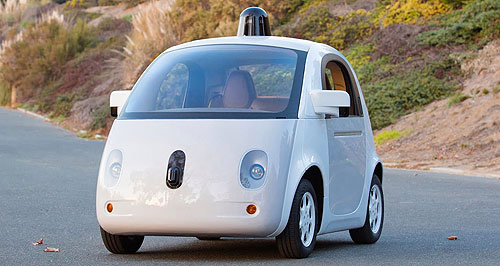News - General News - Autonomous TechnologyConnectivity as important as autonomy: forumMaking connections: A specially modified Volvo XC-90 recently completed Australia's first autonomous vehicle demonstration, using a combination of environmental sensors and connections to satellite and internet networks. Automated vehicles need P2P, internet and infrastructure connectivity to succeed4 Mar 2016 By IAN PORTER DRIVERLESS cars continue to garner attention from both the public and media, but a technical forum has heard that unless connectivity infrastructure is developed in parallel, they will not achieve their full potential as production models. Automated vehicles are predicted to offer major advances in safety and significantly reduced road fatalities, but they will not automatically achieve the expected productivity gains without connectivity said Cohda Wireless chief executive Paul Gray. Connectivity refers to short-range communication between cars and infrastructure, including traffic lights and road signs, as well as connection to the Internet, which can provide real-time congestion information and re-routing depending on conditions. Based in South Australia, Cohda is a leader in Dedicated Short-Range Communications required to connect vehicles and the infrastructure around them and its equipment, developed in conjunction with NXP of the US, will be incorporated into a Delphi unit that will be installed on the 2017 Cadillac CTS. Speaking at a technical briefing organised by Holden, Mr Gray said autonomous vehicle supporting infrastructure needed just as much attention as the vehicles themselves. “Autonomous vehicles get a lot more press than the connected vehicle side of things, but that doesn’t mean they’re competing technologies,” he said. “They are very much complementary technologies.” He said civil authorities would achieve much more in the way of safety, productivity, environment and mobility if the two technologies were used together and that a study showed congestion in Sydney costs road users an estimated $5.1 billion a year, and this was projected to rise to $8.8 billion by 2020. In addition, there are 1600 road fatalities in Australia each year, a figure that could be sharply reduced with the adoption of automated cars, said Mr Gray. “In fact, whilst automated vehicles can do a lot, especially in terms of safety, it’s really the productivity side of things that is critical to achieve the greatest benefits.”“My favourite quote was from a gentleman from the Federal Highways in the US, who said that there was no doubt that autonomous cars would be safer than manual cars, but if they’re not connected to the infrastructure, then they’re going to be stuck in traffic just as much as manual cars.” Mr Gray went on to explain that, while automated cars have many sensors giving them a view of the world immediately around them, communications through DSRC and connection to the Internet offers the wider view of the environment necessary for efficient navigation through a city or to a destination. Peer to peer connectivity allows vehicles access to the sensors of vehicles in their vicinity in addition to their own arrays, enabling the sharing of information about traffic signals, road works and traffic collisions, for example. He said his favourite application for this all-around connectivity was the Green Wave concept, which relies on signal phase information from traffic lights along a major route. This lets the driver know what speed should be used in order to catch the next green light without having to slow down and then accelerate again. “The US Department of Transportation did some trials of this with manual drivers and found that this simple application generated a 7.0 per cent fuel saving, which is quite interesting by itself.” However, the system relied on the drivers noticing that there was a recommended speed, deciding to follow that recommendation and then being able to adhere to the recommended speed. “The department of transportation asked themselves well, what if we were to automate this. So they developed this GlidePath project. It was very simple information, just longitudinal speed control, which is essentially an adaptive cruise control, a technology that is quite mature today. “By adding the adaptive cruise control and wiring it into the connected sequence the fuel saving increased by a factor of three, from 7.0 per cent to 22 per cent. And the cars were doing a much better job of sticking to that speed.” Mr Gray announced that Cohda was conducting a trial with the government of NSW into freight signal priority. “Congestion costs us billions of dollars a year. Half of that cost comes from freight. Perhaps we should give priority to freight vehicles because that’s going to have a big economic impact.”  Read more2nd of February 2016  Jaguar mimics human behaviour in driverless carsData profiling project to make autonomous Jaguars respond more naturally24th of December 2015  CES: Toyota advances autonomous infrastructureData gathering network uses regular Toyotas to collect info for autonomous cars4th of December 2015  Autonomy held back by laws: AudiAudi chief says autonomous technology will be ready before the legislators |
Click to shareGeneral News articlesResearch General News Motor industry news |
















Facebook Twitter Instagram